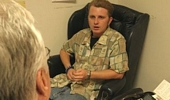The term “first aid” is now an accepted part of everyday language, and there is no doubt that it encompasses the help and assistance given to sick and injured people, but where did the term “first aid” originate and who were the original “first aiders”.
Prehistoric man, by necessity developed methods to treat the illnesses and injuries that befell him. It probably didn’t take long for them to realise in most cases that plugging an open wound would eventually stop bleeding, or by lashing a tree branch to a broken leg would allow the casualty to hobble around and would help healing.
The first recorded history of first aid dates to 1099, when a religious order of knights trained to administer medical treatment was formed. The Order of St John –to which the modern day St John Ambulance organisation traces its roots- specialised in the treatment of battlefield injuries during the crusades and are the first recorded example of people trained to administer first aid.
In 1792, the French Army Surgeon General, formed the first official army medical corps. People were trained and equipped for working away from the field hospitals. Their task was to administer first aid on the battlefield and where necessary remove the casualty to the field hospital by carrying them or on carts.
During the 1860’s the first Geneva Convention and the International Red Cross came into being to protect and deal with sick and injured soldiers on the battlefield. Both resulted from the work begun by Henry Dunant, a Swiss man, who had witnessed soldiers of both sides, being left to die with horrific injuries during the Battle of Solferino in 1859. A short time later, an army surgeon first came up with the idea of training civilians in what was termed “pre-medical treatment”.
The late 1800’s saw drastic changes with the formations of what we now know as the modern day British Red Cross (1870) and St John Ambulance (1877). In 1878, the term “first aid” first appeared in Britain and is thought to be derived from “first treatment” and “National Aid”.
Surgeon Major Peter Shepherd and a Doctor Coleman ran the first public first aid course at Woolwich Presbyterian Church, London in January 1878. Dr James Cantile later published Shepherds lesson notes from that course as First Aid To The Injured. It wasn’t long before St John Ambulance was running other public courses in cities throughout Britain.
Britains first official ambulance crews were trained for use in the mines and on the railways. The attendants were trained in the most basic first aid and equipped with handcarts, although a vast improvement on the facilities previously available, they were little more than a transport service. As late as 1897 saw the formation of London’s first full time ambulance service which was set up by the Metropolitan Asylums Board.
During the First and Second World Wars, the British Red Cross and St John Ambulance joined forces to form the Joint War Organisation and played a major role in support of the medical services, both on the battlefields abroad and in Britain.
The National Health Service Act of 1946 – which came into effect in 1948, laid down a statutory requirement for ambulances to be made available for callout by anyone who needed them, which is the NHS ambulance service, as we know it today.
Modern day first aid training stems from the early work of the Red Cross and St John Ambulance, and in principle has changed little since the early 1900’s, although, looking back through early training manuals reveals some practices, which today are rather amusing.
100 years after the first public first aid course, when training classes are made up of both male and female students, you would encounter problems if you attempted to enforce single sex classes, but, in 1908 it was accepted as the norm and “Mixed classes of men and women are on no account permitted” was printed in the front of training manuals. Further examination reveals the course to be divided into 5 lectures, lectures 1 to 4 are standard for male and female, whereas there is a lecture 5 for males dealing with the stretchers, carrying and the transporting of patients, whilst the female lecture 5 deals with preparation for the arrival of casualties, bed preparation, removal of clothing and preparations for surgeons.1
An early treatment of hysteria, declares the patient will usually be a young girl…and suggests:1. Avoid sympathy with the patient, and speak firmly to her. 2. Threaten her with cold water douche, and if she persists in her “fit”, sprinkle her with cold water. 3. Apply a mustard leaf at the back of the neck.2
Modern day pre hospital treatment of the sick and injured, has in recent years advanced at an unprecedented rate due to the latest medical research and equipment such as AED’s and high tech ambulances, but the basic aim of first aid today is exactly the same as that of the 11th century medical knights.
1.First Aid for the Injured. 24th Edition. 1908.Page 9. St John Ambulance Association
2. First Aid for the Injured. 24th Edition. 1908.Page 133. St John Ambulance Association



